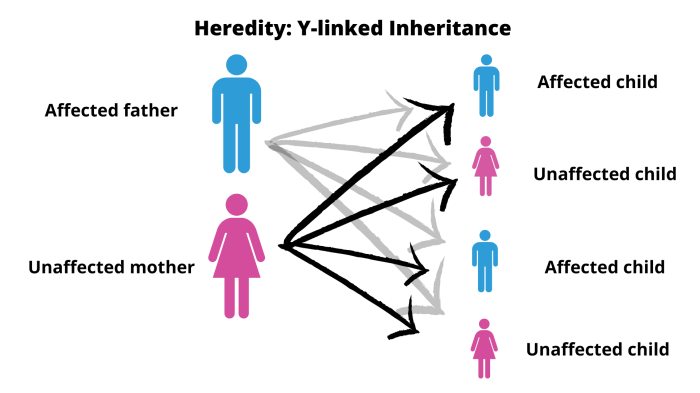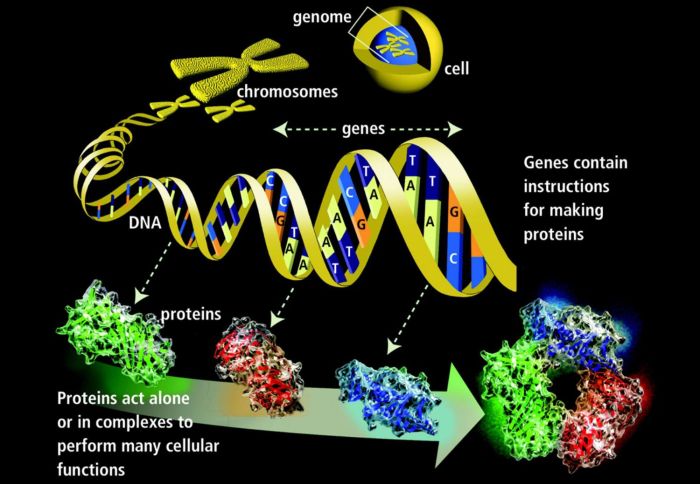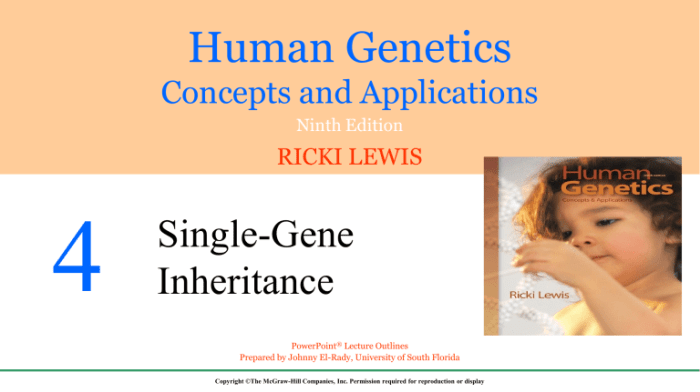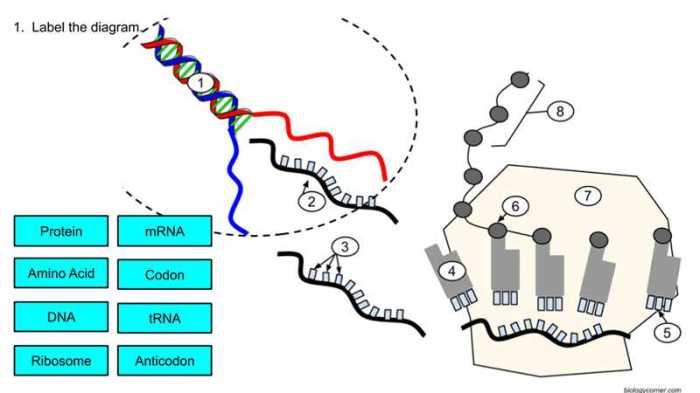With science notebook introduction to genetics and patterns of inheritance at the forefront, this paragraph opens a window to an amazing start and intrigue, inviting readers to embark on a storytelling journey filled with unexpected twists and insights.
The study of genetics and patterns of inheritance unveils the intricate mechanisms that govern the passing of traits from one generation to the next. Understanding these principles empowers us to unravel the mysteries of life, predict outcomes, and make informed decisions that shape our future.
Introduction

Genetics, the study of heredity and variation, holds immense significance in science and our daily lives. By understanding the patterns of inheritance, we can gain insights into the transmission of traits from parents to offspring, and make informed decisions in fields such as medicine, agriculture, and biotechnology.
For instance, understanding genetic inheritance helps us predict the likelihood of inheriting certain diseases, develop personalized treatments, and improve crop yields through selective breeding. Genetics also plays a crucial role in forensic investigations, paternity testing, and unraveling the evolutionary history of species.
Basic Concepts of Genetics

Genesare units of heredity that reside on chromosomes and carry the instructions for specific traits. Allelesare different versions of a gene that occupy the same locus on homologous chromosomes. The combination of alleles at a particular locus is called the genotype, while the observable characteristics of an individual are referred to as the phenotype.
Mendelian inheritance, proposed by Gregor Mendel, describes the fundamental principles of genetic inheritance. According to Mendel’s laws, alleles segregate independently during gamete formation and combine randomly during fertilization. This leads to predictable ratios of genotypes and phenotypes in offspring.
Dominant allelesare those that mask the effects of recessive alleles. In heterozygous individuals, the dominant allele is expressed in the phenotype, while the recessive allele is masked. However, in homozygous recessive individuals, both alleles are recessive, resulting in the recessive phenotype.
Patterns of Inheritance

Dominant and Recessive Inheritance
In dominant and recessive inheritance, a single dominant allele (D) masks the effect of a recessive allele (d). Individuals with the genotype DD or Dd exhibit the dominant phenotype, while those with the genotype dd exhibit the recessive phenotype.
Example:Pea plant height, where the allele for tall plants (D) is dominant over the allele for short plants (d).
Codominant Inheritance
In codominant inheritance, both alleles are expressed in the phenotype. Individuals with the heterozygous genotype exhibit a distinct phenotype that differs from both homozygous phenotypes.
Example:Blood type in humans, where the alleles for type A (IA) and type B (IB) are codominant, resulting in the AB blood type in heterozygous individuals.
Incomplete Dominance
In incomplete dominance, neither allele is dominant, and the heterozygous genotype exhibits an intermediate phenotype that is distinct from both homozygous phenotypes.
Example:Snapdragon flower color, where the allele for red flowers (R) and the allele for white flowers (r) produce pink flowers in heterozygous individuals.
Sex-Linked Inheritance
Sex-linked inheritance occurs when genes are located on sex chromosomes (X and Y). Genes on the X chromosome are inherited differently in males and females, as males have only one X chromosome and one Y chromosome, while females have two X chromosomes.
Example:Color blindness and hemophilia are X-linked recessive traits, which are more common in males than in females.
Applications of Genetics

Medicine
- Genetic testing:Identifying genetic predispositions to diseases, enabling early diagnosis and preventive measures.
- Gene therapy:Treating genetic disorders by introducing functional genes into cells.
- Personalized medicine:Tailoring treatments based on an individual’s genetic profile.
Agriculture, Science notebook introduction to genetics and patterns of inheritance
- Selective breeding:Improving crop yields and livestock characteristics by breeding individuals with desirable traits.
- Genetically modified organisms (GMOs):Modifying plant or animal genomes to enhance traits such as disease resistance or nutritional value.
Biotechnology
- DNA fingerprinting:Identifying individuals based on their unique DNA profiles.
- Genetic engineering:Creating new organisms or modifying existing ones by manipulating their genomes.
- Biopharmaceuticals:Producing therapeutic proteins and antibodies using genetically engineered cells.
Ethical Considerations
The advancement of genetic technologies raises ethical concerns, such as:
- Privacy:Protecting individuals’ genetic information from unauthorized use or discrimination.
- Eugenics:Preventing the birth of individuals with perceived undesirable genetic traits.
- Gene editing:Ensuring responsible use of gene editing technologies to avoid unintended consequences.
FAQ Resource: Science Notebook Introduction To Genetics And Patterns Of Inheritance
What is the significance of studying genetics and patterns of inheritance?
Understanding genetics and patterns of inheritance allows us to comprehend the mechanisms that govern the transmission of traits, predict outcomes, and make informed decisions related to health, breeding, and genetic engineering.
How can genetics impact our daily lives?
Genetics plays a crucial role in determining our physical characteristics, susceptibility to diseases, and response to medications. It also has implications for personalized medicine, genetic counseling, and the development of new therapies.
What are the key concepts of genetics?
Key concepts include genes, alleles, genotypes, phenotypes, Mendelian inheritance, dominant and recessive alleles.
What are the different types of inheritance patterns?
Inheritance patterns include dominant, recessive, codominant, and incomplete dominance. Each pattern is characterized by the way alleles interact to determine the phenotype of an individual.
How does sex-linked inheritance differ from autosomal inheritance?
Sex-linked inheritance involves genes located on the sex chromosomes (X and Y), while autosomal inheritance involves genes located on the non-sex chromosomes.
